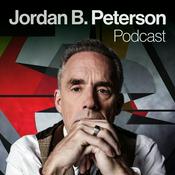89 episodes

Gynecological Cancers
17/12/2025 | 30 mins.
Ninja Nerds!In this episode of the Ninja Nerd Podcast, Zach and Rob guide you through diagnosing, staging, and management of gynecological cancers using five high-yield, case-based discussions.We start with a 58-year-old postmenopausal woman presenting with abdominal bloating, early satiety, and weight loss. The workup, including pelvic exam, transvaginal ultrasound, and CA-125 testing, reveals advanced epithelial ovarian carcinoma with omental caking. We walk through the surgical and chemotherapeutic strategies for both confined and advanced disease, plus the role of PARP inhibitors in BRCA-positive patients, and review complications such as ascites, pleural effusion, and small-bowel obstruction.Next, we cover a 65-year-old woman with postmenopausal bleeding and a thickened endometrial stripe on TVUS. Biopsy confirms type I endometrial adenocarcinoma. We discuss treatment pathways based on stage—from TAH-BSO for early disease to adding radiation or chemotherapy when risk increases—and highlight complications like anemia and pyometra.The third case features a 34-year-old woman with postcoital spotting, HPV-16 positivity, and biopsy-proven invasive cervical carcinoma. We break down management options from conization for CIN 2/3 to radical hysterectomy or concurrent chemoradiation for more extensive disease. Key complications, including hydronephrosis and metastatic spread patterns, are also reviewed.Case four presents a 62-year-old woman with vaginal spotting and malodorous discharge, leading to the diagnosis of primary vaginal squamous carcinoma. We focus on the diagnostic sequence—pelvic exam, biopsy, MRI/PET—and the role of cisplatin-based chemoradiation for localized disease.Finally, we discuss a 72-year-old woman with chronic vulvar pruritus and an ulcerated labial lesion, diagnosed as early invasive vulvar carcinoma. We highlight the importance of biopsy for diagnosis and surgical excision for cure.We close by emphasizing a shared approach across all cases: begin with a broad differential, select targeted diagnostics based on presentation, confirm histology, and let stage and patient factors guide treatment—all while anticipating complications.Let’s get into it, Ninja Nerds!Support the show

Oncologic Emergencies
04/12/2025 | 44 mins.
Ninja Nerds!In this episode of the Ninja Nerd Podcast, Zach and Rob deliver a high-yield, case-based breakdown of the most important oncologic emergencies that require rapid recognition and management.We begin with neutropenic fever, highlighting when to suspect it, which labs to order, and why empiric IV antibiotics must be started immediately. From there, we move into tumor lysis syndrome, reviewing the hallmark lab abnormalities, urgent interventions with fluids, rasburicase, and electrolyte management, and the potential for acute renal failure.Next, we explore spinal cord compression, a true emergency that presents with back pain, weakness, and bladder dysfunction. Zach emphasizes the importance of initiating steroids right away and consulting for surgical or radiation decompression to preserve neurologic function.We then discuss leukostasis, a complication of acute leukemia that presents with respiratory distress, vision changes, and neurologic symptoms. Management focuses on emergent cytoreduction with hydroxyurea and leukapheresis while avoiding interventions that worsen blood viscosity.The episode continues with cardiac tamponade, presenting with hypotension, JVD, and distant heart sounds. We review the urgent role of echocardiography, pericardiocentesis, and definitive management options.In our sixth case, we cover hypercalcemia of malignancy, reviewing stepwise evaluation, the role of PTHrP, and treatment with IV fluids, calcitonin, and bisphosphonates, along with complications such as renal injury and arrhythmias.Finally, we conclude with superior vena cava (SVC) syndrome, discussing key clinical features like facial swelling and venous distension, imaging findings, and management strategies including biopsy, chemoradiation, and stenting in unstable cases.By the end of this session, you’ll have a clear, stepwise framework for approaching seven of the most time-sensitive oncologic emergencies, reinforced with clinical reasoning, red flag recognition, and immediate interventions.Enjoy the episode, and please support us below!Support the show

Pancreatic and Hepatobiliary Cancer
06/11/2025 | 36 mins.
Ninja Nerds!In this episode of the Ninja Nerd Podcast, Zach and Rob explore pancreatic and hepatobiliary cancers through four patient cases packed with clinical pearls.We begin with a 63-year-old man presenting with painless jaundice, pruritus, and weight loss. Zach walks through the differential for obstructive cholestasis, covering malignant (pancreatic head cancer, cholangiocarcinoma, ampullary tumors) and benign (stones, strictures) causes. We emphasize RUQ ultrasound's role in assessing for ductal dilation, followed by pancreas-protocol CT and EUS-guided FNA to confirm pancreatic adenocarcinoma. Management hinges on resectability, with Zach outlining surgical criteria and adjuvant chemotherapy options.Next, we discuss a 58-year-old man with cirrhosis and a newly detected liver nodule on routine surveillance. With an elevated AFP and classic arterial enhancement with portal venous washout on imaging, the diagnosis of hepatocellular carcinoma (HCC) becomes clear. We outline curative options for early-stage disease—including surgical resection and radiofrequency ablation—and review the role of transplant under Milan criteria.Case three features a 48-year-old woman with primary sclerosing cholangitis and rising cholestasis, prompting a focused discussion on perihilar cholangiocarcinoma (Klatskin tumor). We highlight the role of MRCP for mapping strictures, followed by ERCP with brushings to confirm malignancy. With localized disease, Zach walks through surgical resection with liver wedge + bile duct excision, followed by adjuvant capecitabine, and offers guidance on palliative strategies for unresectable disease.Finally, we examine a 72-year-old woman with a porcelain gallbladder and new mass—raising suspicion for gallbladder carcinoma. The case underscores the importance of RUQ ultrasound for polypoid lesions and how staging dictates surgery. For early T1a disease, simple laparoscopic cholecystectomy is curative; deeper invasion requires extended cholecystectomy.We close with a summary of diagnostic strategies: ultrasound for ductal or gallbladder disease, triphasic CT or MRI for liver masses, MRCP for PSC patients, and pancreas-protocol CT for head-of-pancreas tumors. Each case reinforces the principle: start broad, refine with the right imaging, and let stage drive treatment.Let’s get into it, Ninja Nerds!Support the show

Esophageal & Gastric Cancer
23/10/2025 | 28 mins.
Ninja Nerds!In this episode of the Ninja Nerd Podcast, Zach and Rob discuss two high-yield, board-relevant cases highlighting the diagnosis, staging, and treatment of esophageal adenocarcinoma and intestinal-type gastric adenocarcinoma.We begin with a 56-year-old man presenting with progressive dysphagia and unintentional weight loss. Zach breaks down the concern for distal esophageal adenocarcinoma in the long-standing GERD and Barrett's esophagus setting. We walk through the stepwise diagnostic process—starting with barium swallow, followed by EGD with biopsy, and endoscopic ultrasound (EUS) and CT chest/abdomen/pelvis for staging. Based on a staging result of T2 N1 M0, we discuss the standard approach of neoadjuvant chemoradiation followed by transthoracic esophagectomy, with comparisons to management of early mucosal disease and metastatic presentations.Next, we pivot to a 63-year-old woman with chronic Helicobacter pylori gastritis, now presenting with early satiety, epigastric discomfort, and melena. The focus shifts to intestinal-type gastric adenocarcinoma, classically found along the lesser curvature. We review the appropriate use of EGD with biopsy as the first test in alarm dyspepsia, followed by CT imaging and EUS to assess depth and nodal involvement. With a staging result of T1b N0, we emphasize the role of subtotal (distal) gastrectomy with D2 lymph node dissection, and outline when perioperative chemotherapy or palliation (e.g., GOO stents, systemic chemo, trastuzumab for HER2⁺ tumors) becomes necessary.Finally, we conclude with a rapid comparison of the two cases, highlighting shared themes: the importance of depth of invasion, nodal status, and the shift from endoscopic resection to surgical and systemic therapies based on stage.Support us below, Ninja Nerds!Support the show

Testicular Cancer
09/10/2025 | 20 mins.
Ninja Nerds!In this episode of the Ninja Nerd Podcast, Zach and Rob discuss testicular cancer, one of the most common solid tumors in young adult men.We begin with a classic clinical vignette of a young male presenting with a painless testicular mass. From there, we explore the epidemiology and key risk factors for testicular germ cell tumors, including cryptorchidism, family history, and Klinefelter syndrome (in rare cases of nonseminomatous tumors like mediastinal choriocarcinoma). We then distinguish between the two major types: seminomas and nonseminomas—breaking down their unique biological behaviors and typical age distributions.Our discussion dives deep into the pathophysiology of germ cell tumors, highlighting tumor markers like AFP, β-hCG, and LDH, and how they guide diagnosis and treatment. We walk through the classic presentations of seminomas (often β-hCG positive and radiosensitive) versus nonseminomas (associated with aggressive behavior and elevated AFP/β-hCG levels).Next, we focus on the diagnostic workup, including scrotal ultrasound, serum tumor marker analysis, and CT imaging for staging. We emphasize the importance of inguinal orchiectomy as both a diagnostic and therapeutic intervention.Finally, we cover treatment strategies based on stage and histology—ranging from surveillance and radiation therapy for early-stage seminomas to cisplatin-based chemotherapy regimens and retroperitoneal lymph node dissection (RPLND) for advanced or nonseminomatous disease.Don’t miss it—let’s get into it, Ninja Nerds!Support the show
More Education podcasts
Trending Education podcasts
About Ninja Nerd
Listen to Ninja Nerd, The Mel Robbins Podcast and many other podcasts from around the world with the radio.net app

Get the free radio.net app
- Stations and podcasts to bookmark
- Stream via Wi-Fi or Bluetooth
- Supports Carplay & Android Auto
- Many other app features
Get the free radio.net app
- Stations and podcasts to bookmark
- Stream via Wi-Fi or Bluetooth
- Supports Carplay & Android Auto
- Many other app features


Ninja Nerd
download the app,
start listening.




























